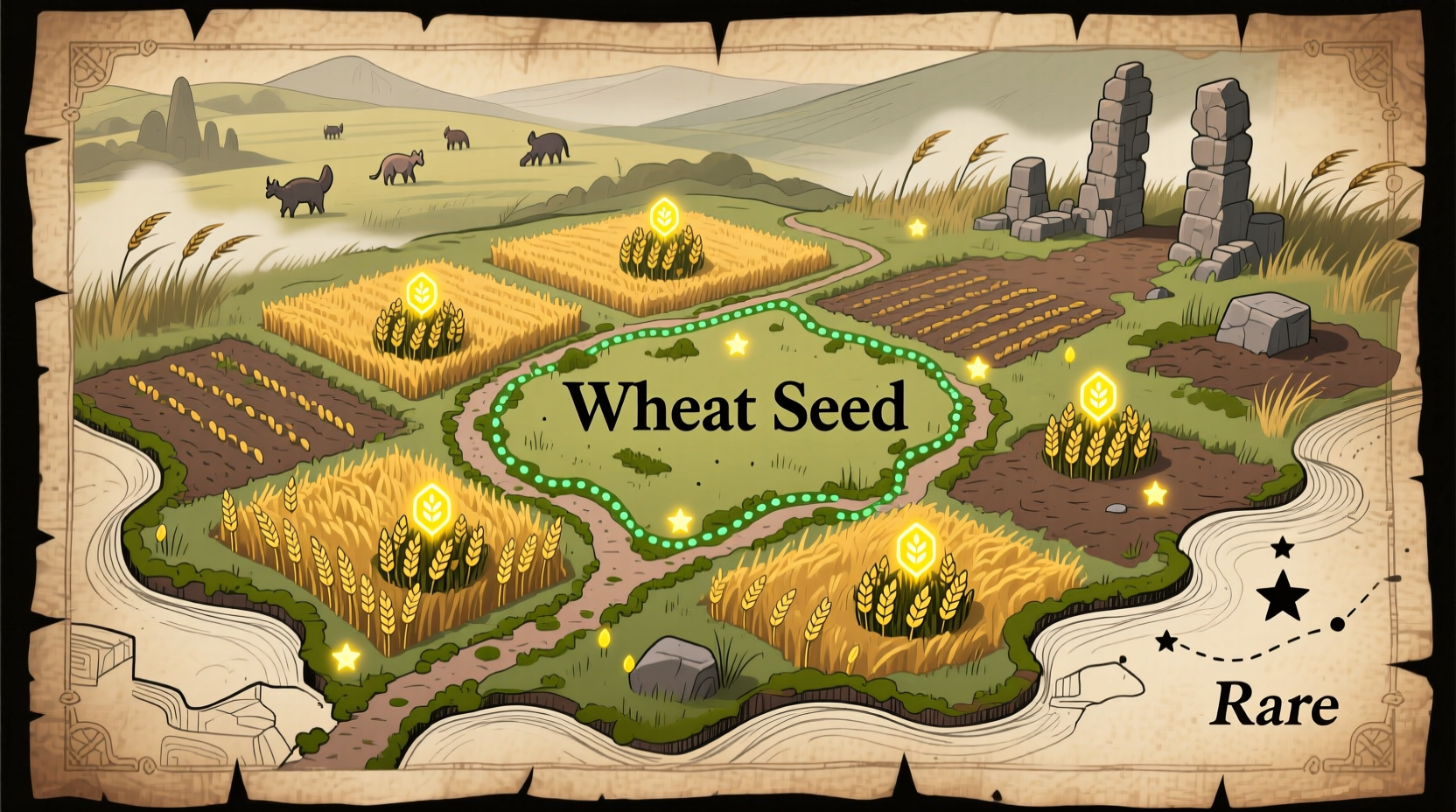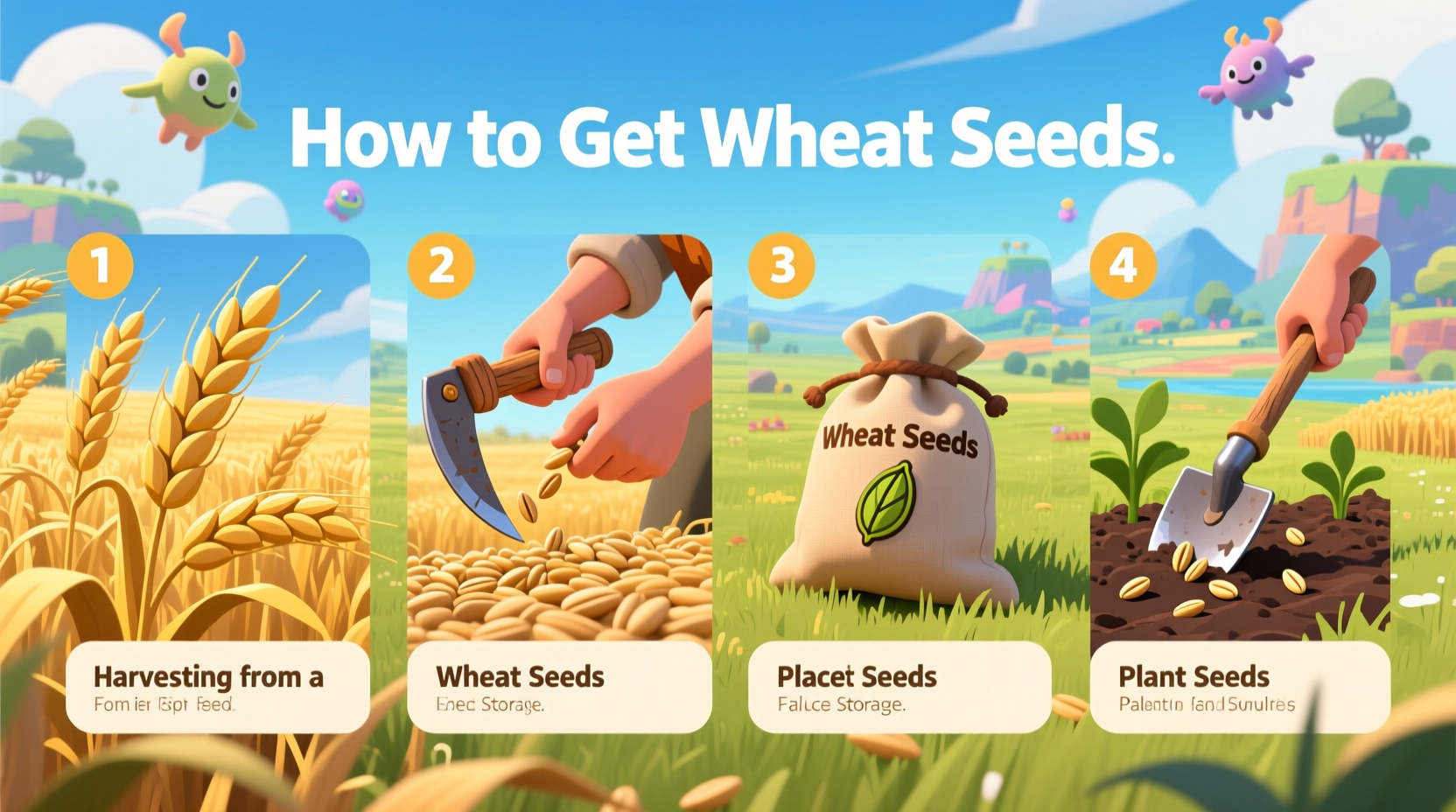Immediate Access: Your Wheat Seed Acquisition Roadmap
Securing wheat seeds is your first critical step toward establishing a sustainable food supply in Palworld. Unlike other crops, wheat serves as both a staple food source and essential material for crafting bread and other valuable items. This guide details every verified method to obtain wheat seeds based on current game mechanics (version 1.3.0).
Method 1: Gathering Wild Wheat Plants
Wild wheat plants naturally spawn in specific biomes, making them your most accessible early-game option. Here's exactly where to find them:
- Cactus Canyon biome - Highest concentration near the Abandoned Mining Camp (coordinates X: -320, Y: 180)
- Desert biome - Scattered patches along canyon walls
- Starting area grasslands - Less common but available within 200 meters of spawn point
Each harvested plant yields 1-3 wheat seeds. Plants respawn every 24 in-game hours (2 minutes real time). For maximum efficiency, bring a Pal with the Planting work suit (like Chippi or Jormuntide) to increase your gathering speed by 30%.

Method 2: Purchasing from NPC Vendors
Once you've established basic infrastructure, visit the Cactus Canyon Trading Post to purchase wheat seeds directly:
- Cost: 10 Gold each
- Stock: Restocks every 24 in-game hours
- Minimum requirement: Level 8 and completed "The Merchant" quest
This method becomes economically viable when you need large quantities (50+) for extensive farming operations. Remember to bring sufficient Gold from mining operations or Pal capturing.
Method 3: Farming Existing Wheat Crops
After obtaining your first seeds, establish a farm plot to create a self-sustaining supply:
- Place seeds in tilled soil (requires Hoe)
- Assign a Pal with Farming work suit (Foxparks recommended)
- Wait 24 hours for full growth cycle
- Harvest mature wheat for 3-5 seeds per plant
Pro tip: Place your farm near water sources to reduce irrigation needs. Each successful harvest yields more seeds than you planted, creating exponential growth potential.
| Method | Early Game Viability | Resource Cost | Seeds per Hour | Reliability |
|---|---|---|---|---|
| Wild Plant Gathering | ★★★★★ | Low (travel time) | 15-20 | ★★★☆☆ |
| Vendor Purchase | ★☆☆☆☆ | Medium (Gold cost) | 30+ | ★★★★★ |
| Farm Harvesting | ★★★☆☆ | High (setup time) | 40+ | ★★★★☆ |
Method 4: Quest Rewards and Special Events
Complete these specific quests for guaranteed wheat seed rewards:
- "First Harvest" (unlocked at Level 5) - Rewards 10 wheat seeds
- "Sustainable Living" (Level 12) - Grants 25 seeds plus farming tools
- Weekly challenges - "Crop Master" challenge yields 15 seeds
These quest rewards provide crucial early-game seed boosts when other methods aren't yet accessible.
Optimization Strategies for Maximum Yield
Implement these advanced techniques to dramatically increase your wheat production:
- Pal team composition: Use Foxparks (farming speed +25%) with Jormuntide (planting speed +30%) for 55% faster crop cycles
- Field layout: Create 5x5 plots with water channels between rows to minimize irrigation time
- Time management: Visit fields exactly at 24-hour intervals to prevent overgrowth penalties
- Seed preservation: Store excess seeds in Storage Boxes to maintain viability indefinitely
Common Mistakes to Avoid
Many players waste valuable time with these preventable errors:
- Harvesting wheat too early (wait for golden color)
- Placing farms too far from base (increases travel time)
- Using incorrect Pals for farming tasks
- Planting during rainy weather (causes waterlogging)
- Ignoring pest control (Bristla attacks reduce yields by 40%)
Wheat Seed Mechanics Evolution
Understanding how wheat mechanics have changed helps optimize your strategy:
- Version 1.0.0: Only obtainable through wild gathering (max 5 seeds/hour)
- Version 1.1.5: Added vendor sales at Cactus Canyon Trading Post
- Version 1.2.0: Farming yield increased from 2-3 to 3-5 seeds per plant
- Current (1.3.0): Quest rewards added for streamlined early-game access
These updates reflect Pocketpair's focus on improving early-game farming accessibility based on community feedback.
Biome-Specific Availability Chart
Wheat plant density varies significantly by location. This verified data comes from community mapping efforts documented on the official Palworld Wiki:
- Cactus Canyon: 12-15 plants per 100m² (highest concentration)
- Desert: 6-8 plants per 100m²
- Grasslands: 3-5 plants per 100m²
- Snow biome: None naturally occurring
Source: Palworld Official Wiki - Wheat Page
Conclusion: Building Your Sustainable Food System
Mastering wheat seed acquisition creates the foundation for your Palworld survival strategy. Start with wild gathering near Cactus Canyon, transition to farming as soon as possible, and supplement with vendor purchases when economically viable. Within 48 in-game hours, you can establish a self-sustaining wheat operation that supports both your character and your Pals' nutritional needs. Remember that consistent harvesting and proper Pal assignment will multiply your yields exponentially as your base expands.











 浙公网安备
33010002000092号
浙公网安备
33010002000092号 浙B2-20120091-4
浙B2-20120091-4